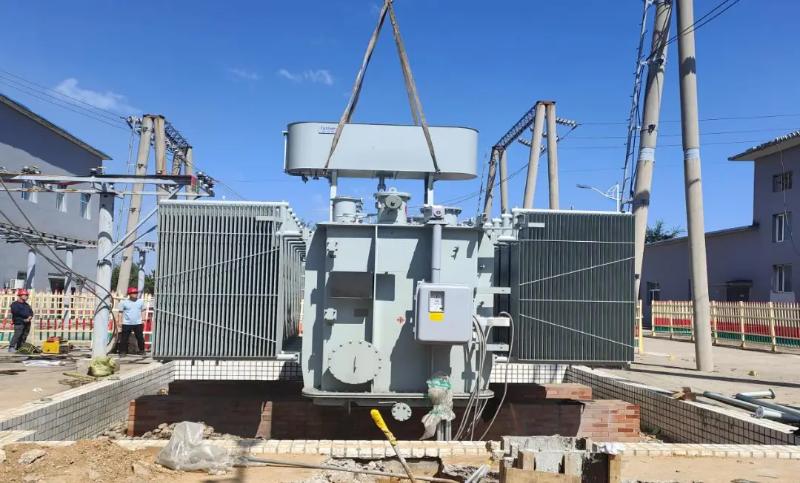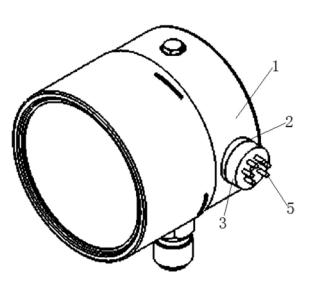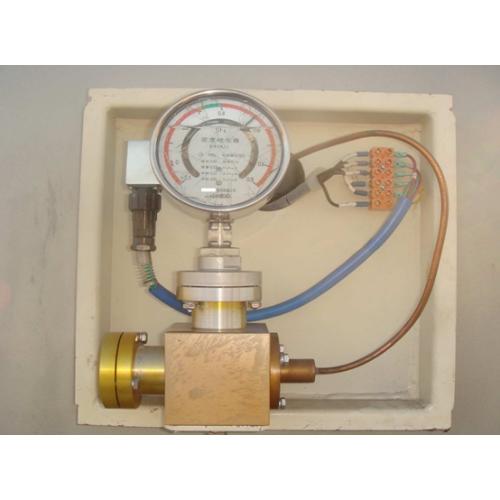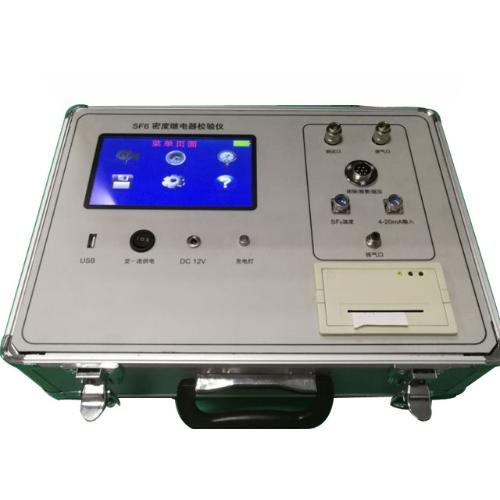The 110kV substation at our plant was constructed and put into operation in February 2005. The 110kV system employs ZF4-126\1250-31.5 type SF6 GIS (Gas-Insulated Switchgear) from Beijing Switchgear Factory, comprising seven bays and 29 SF6 gas compartments, including five circuit breaker compartments. Each circuit breaker compartment is equipped with an SF6 gas density relay. Our plant uses the MTK-1 model oil-filled density relays manufactured by Shanghai Xinyuan Instrument Factory. These relays are available in two pressure ranges: -0.1 to 0.5 MPa and -0.1 to 0.9 MPa, with either one or two sets of contacts. They utilize a Bourdon tube and bimetallic strip as sensing elements. When gas leakage reaches a certain level, the electrical contacts trigger alarm or lockout signals, enabling different protective functions. On October 17, 2015, during a routine inspection, on-duty electricians discovered varying degrees of gas leakage in density relays for compartments 11, 19, and 22. This incident highlighted the operational risks posed by oil leakage in SF6 density relays.
1. Hazards of Oil Leakage in SF6 Density Relays
Oil leakage in density relays causes significant damage to power equipment:
1.1 Once the anti-seismic oil within the density relay is completely lost, its shock-absorbing capability is significantly reduced. If the circuit breaker operates (opens or closes) under such conditions, it may lead to contact failure, excessive deviation from standard values, pointer jamming, and other malfunctions (see Figure 1: Oil-filled density relay).
1.2 Due to the specific characteristics of the contacts in SF6 density relays—low contact force and long operational duration—contact oxidation can occur over time, leading to poor or interrupted contact. In SF6 density relays that have completely lost their oil, the magnetic-assisted electrical contacts are exposed to air, promoting oxidation and dust accumulation, which easily results in poor contact at the contact points. During operation, it has been observed that 3% of SF6 density relay contacts fail to conduct effectively, primarily due to insufficient anti-seismic oil. If the pointer of an SF6 density relay becomes stuck, or if the contacts fail or cannot conduct properly, the safety and reliability of the power grid are directly threatened.

2. Causes of Oil Leakage in SF6 Density Relays
The primary cause of oil leakage in SF6 density relays is the failure of seals at two locations: the junction between the terminal base and the surface, and the seal between the glass and the case. This seal failure is mainly due to aging of the sealing rings. The anti-seismic oil seals in SF6 density relays are typically made of nitrile rubber (NBR). NBR is a synthetic elastomer copolymer composed of butadiene, acrylonitrile, and emulsion, with a molecular structure featuring an unsaturated carbon chain. The acrylonitrile content directly affects the properties of NBR: higher acrylonitrile content increases oil, solvent, and chemical resistance, as well as strength, hardness, wear resistance, and heat resistance, but reduces low-temperature flexibility, elasticity, and increases gas impermeability. Factors affecting the aging of NBR seals can be categorized into internal and external factors.
2.1 Internal Factors
2.1.1 Molecular Structure of Nitrile Rubber
NBR is not a saturated hydrocarbon rubber; its polymer chains contain unsaturated double bonds. Under various external influences, oxygen reacts at these double bonds, forming oxides. These oxides further decompose into rubber peroxides, leading to molecular chain scission. Simultaneously, small amounts of active groups are generated, promoting cross-linking of rubber molecules. This significantly increases cross-linking density, making the rubber brittle and hard. The number of double bonds directly influences the rate of aging.
2.1.2 Rubber Compounding Agents
The selection of vulcanizing agents during rubber manufacturing is critical. An increase in sulfur cross-linking concentration accelerates the aging process of the rubber.
2.2 External Factors
2.2.1 Oxygen is a primary cause of rubber aging. Oxygen molecules cause chain scission and re-cross-linking. Another factor is ozone, which is highly reactive. Ozone attacks the double bonds in rubber molecules, forming ozonides that decompose and break the polymer chains. Since the anti-seismic oil seal is in direct contact with air, and oxygen/ozone can dissolve into the oil, they participate in aging reactions within the oil.
2.2.2 Thermal Energy accelerates the oxidation rate. Typically, a 10°C increase in temperature doubles the oxidation rate. Additionally, heat accelerates reactions between rubber chains and compounding agents, causing volatile components in the rubber to evaporate, significantly degrading rubber performance and shortening its service life.
2.2.3 Mechanical Fatigue. Under sustained stress, rubber undergoes strain, leading to mechanical-oxidative effects. Combined with thermal energy, this accelerates oxidation. Over its service life, rubber gradually loses elasticity, leading to mechanical aging. Aged rubber seals lose their sealing capability, resulting in oil leakage.
2.2.4 Insufficient Initial Compression of the Seal. Rubber seals rely on deformation during installation to create a tight fit between the seal and the sealing surface, preventing leakage. Insufficient initial compression is most likely to cause leakage. Design issues—such as selecting a seal with a small cross-section, using an oversized installation groove, or improperly tightening the case cover during installation—can all result in inadequate initial compression. In practice, tightening the relay case cover is often done by feel, making it difficult to achieve the optimal position, thus leading to insufficient compression. Moreover, rubber has a cold-shrink coefficient more than ten times greater than metal. At low temperatures, the rubber seal cross-section contracts and the material hardens, further reducing compression.
2.2.5 Excessive Compression Rate. To ensure sealing performance, rubber O-rings require a certain compression rate. However, this cannot be increased blindly. Excessive compression can cause permanent deformation during installation, generate high equivalent stress in the seal, lead to material failure, shorten service life, and ultimately cause oil leakage. Again, the practice of tightening the relay cover by feel often results in excessive compression due to difficulty in achieving the correct position.
3. ZDM-Type Oil-Free, Anti-Seismic Density Relay
3.1 Shock Absorption and Operating Principle of the ZDM-Type Relay
The ZDM-type oil-free, anti-seismic density relay (see Figure 2) achieves shock absorption by incorporating a shock-absorbing pad between the connector and the case. This pad buffers vibrations generated during circuit breaker operation. The impact and vibration from the switch operation are transmitted through the connector to the shock-absorbing pad, which then dampens the energy before passing it to the relay case. Due to this buffering effect, the vibrational and impact energy reaching the relay case is greatly reduced, resulting in excellent anti-seismic performance.
Additionally, the operating principle of the ZDM-type relay relies on a spring tube as the elastic element, with a temperature compensation strip correcting for pressure and temperature variations to reflect changes in SF6 gas density. The output contacts use a micro-switch mechanism. The control of the micro-switch signal is performed by the temperature compensation strip and spring tube, combined with the buffering effect of the shock-absorbing pad. This design prevents false signals due to vibration, ensuring reliable and effective system operation. It significantly enhances the anti-seismic performance of the pointer-type density relay, making it a high-performance device.
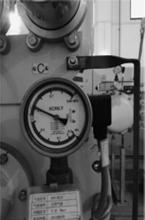
3.2 Features of the ZDM-Type Oil-Free, Anti-Seismic Density Relay
3.2.1 Full stainless steel enclosure with excellent waterproof and corrosion-resistant properties, and an attractive appearance;
3.2.2 Accuracy: 1.0 class (at 20°C), 2.5 class (at -30°C to 60°C);
3.2.3 Operating ambient temperature: -30°C to +60°C; operating ambient humidity: ≤95% RH;
3.2.4 Anti-seismic performance: 20 m/s²; anti-impact performance: 50g, 11ms; sealing performance: ≤10⁻⁸ mbar·L/s;
3.2.5 Contact rating: AC/DC 250V, 1000VA/500W;
3.2.6 Enclosure protection rating: IP65;
3.2.7 Oil-free design, resistant to vibration and impact, and permanently leak-proof;
3.2.8 Stable and highly consistent performance of the temperature-sensing element.
The above features demonstrate that the ZDM-type oil-free, anti-seismic density relay completely eliminates the problem of oil leakage. By utilizing a unique structural design and shock-absorbing pads instead of anti-seismic oil, it fundamentally prevents oil leakage during operation.
4. Conclusion
The main causes of oil leakage in density relays stem from manufacturing, operation, and maintenance issues. When equipment density decreases, not only is the dielectric insulation strength reduced, but the circuit breaker’s interrupting capacity is also compromised. Therefore, timely replacement of oil-leaking density relays is essential. To ensure safe and reliable operation, it is recommended to use ZDM-type oil-free, anti-seismic density relays or similar devices in future applications.












